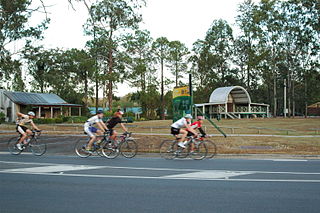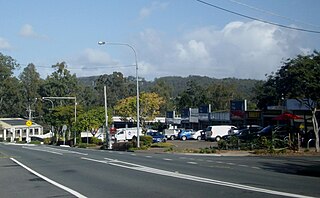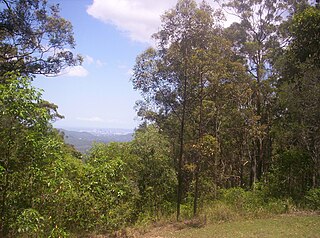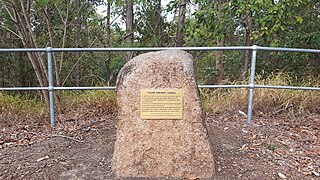
The Ferny Grove railway line is a 13-kilometre (8 mi) suburban railway line in Brisbane, the state capital of Queensland, Australia. It is part of the Queensland Rail Citytrain network.

Ferny Grove railway station is the terminus station of the Ferny Grove line in Queensland, Australia. It serves the Brisbane suburb of Ferny Grove.

Wooloowin is a suburb in the City of Brisbane, Queensland, Australia. In the 2021 census, Wooloowin had a population of 4,029 people.

Alderley is a northern suburb in the City of Brisbane, Queensland, Australia. In the 2021 census, Alderley had a population of 6,748 people.

Mitchelton is a north-western suburb in the City of Brisbane, Queensland, Australia. In the 2021 census, Mitchelton had a population of 9,244 people.

Carseldine is a suburb in the City of Brisbane, Queensland, Australia. In the 2021 census, Carseldine had a population of 10,093 people.

Gaythorne is a suburb in the City of Brisbane, Queensland, Australia. In the 2021 census, Gaythorne had a population of 3,158 people.

Dayboro is a rural town and locality in the City of Moreton Bay, Queensland, Australia. In the 2021 census, the locality of Dayboro had a population of 2,376 people.

Samford is a town in the City of Moreton Bay, South East Queensland, Australia. It consists of two localities, Samford Village and Samford Valley. In 2006 census, the town of Samford had a population of 656 people.

Keperra is a suburb in the City of Brisbane, Queensland, Australia. In the 2021 census, Keperra had a population of 7,014 people.
Newmarket is a north-west suburb in the City of Brisbane, Queensland, Australia. In the 2021 census, Newmarket had a population of 5,083 people.

Everton Park is a northern suburb of the City of Brisbane, Queensland, Australia. In the 2021 census, Everton Park had a population of 10,111 people.

Wilston is a northern suburb in the City of Brisbane, Queensland, Australia. In the 2021 census, Wilston had a population of 4,110 people.

Enoggera is a north-western suburb in the City of Brisbane, Queensland, Australia. It is home to the Gallipoli Barracks.

Upper Kedron is a outer north-western suburb in the City of Brisbane, Queensland, Australia. In the 2021 census, Upper Kedron had a population of 5,800 people.

Arana Hills is a suburb in Division 10 of the City of Moreton Bay, Queensland, Australia. In the 2021 census, Arana Hills had a population of 6,971 people.

Ferny Hills is a suburb in the City of Moreton Bay, Queensland, Australia. In the 2021 census, Ferny Hills had a population of 8,726 people.

Camp Mountain is a rural locality in the City of Moreton Bay, Queensland, Australia. In the 2021 census, Camp Mountain had a population of 1,447 people.

Samsonvale is a rural locality in the City of Moreton Bay, Queensland, Australia. In the 2021 census, Samsonvale had a population of 674 people.

Yugar is a rural locality in the City of Moreton Bay, Queensland, Australia. In the 2021 census, Yugar had a population of 406 people.





















